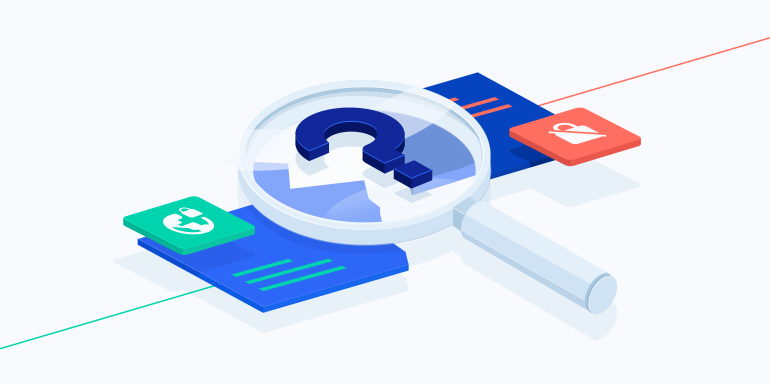- Myth #1: Personalization is ineffective
- Myth #2: Personalization is creepy
- Myth #3: You can’t personalize with GDPR
- Myth #4: It’s only possible for big brands
- Myth #5: What works for one business, works for another
- Myth #6: Personalization is just for ads
- Myth #7: You need technical expertise
- Myth #8: A/B testing is personalization
- Overcoming the myths of personalization
It may not seem like it to you, but personalization is a controversial topic. Some say it’s the most valuable tactic in a business’ repertoire; others say it’s a creepy technique that’s better off unused. Some say it’s no different than segmentation, while others claim it’s more than that.
With all the conflicting information going around, it’s hard to keep your facts straight. Today, we tackle some of the most common personalization myths.
8 Personalization myths, debunked
Myth #1: Personalization is ineffective
Believe it or not — despite the trend toward increasingly personalized marketing, and the logic it’s based in — there are still those who deny personalization is effective.
These are usually people who have half-heartedly tried personalization and given up. We say this because most data points to the success of personalization, from both consumers and marketers.
About 70% of consumers say they’re tired of the old-fashioned way of blasting irrelevant marketing messages to the masses. This is why 86% of marketers say they use personalization: to deliver a better customer experience:
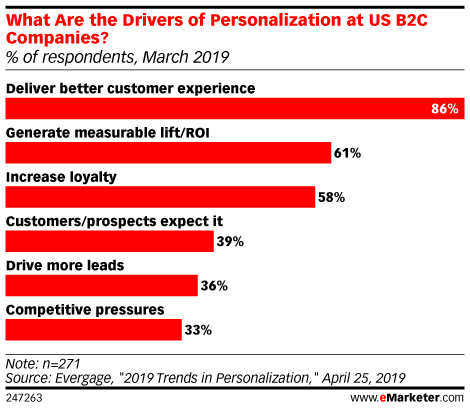
Regardless of why you do it, personalization comes with major benefits. Nearly 90% of U.S. marketers reported seeing measurable improvements due to personalization, with more than half reporting a lift greater than 10%.
There’s no shortage of impressive ROI data on personalization. Find more here among the 68 personalization statistics every digital advertiser should keep in mind.
Myth #2: Personalization is creepy
“Personalization is creepy” is a zombie myth. No matter how many times you kill it, it keeps coming back.
WordStream debunked it years ago, showing that retargeting ads actually become more effective the more users are exposed to them:
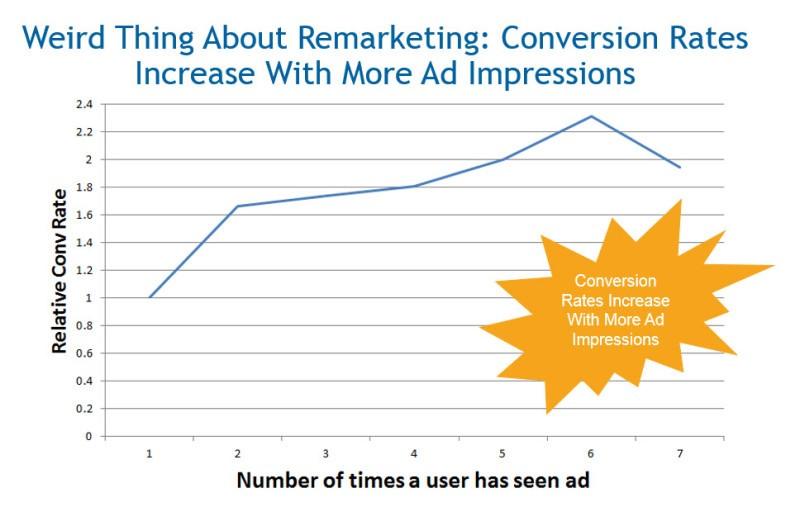
If you want more proof, though, an online study by SAS of over 2,900 consumers across 7 countries showed that most people appreciate personalization. They’re willing to share information about themselves as long as they get something in return.
An Epsilon survey offered additional proof, showing that 80% of customers are more likely to do business with a company that provides personalized experiences. It also found that 90% of people ages 18-64 find personalization appealing.
These statistics and more have prompted headlines like “More Consumers Than Ever Want Retailers To Personalize Service,” and “Consumers Expect Personalization, Reveals Report.”
It’s pretty easy to see that consumers want personalization.
Of course, it can go too far. The story of Target exposing a pregnant teen to her parents is widely known. But cases like this are easily solved with the right judgment call, or, by surveying customers. Do they want you to use beacon technology to send push notifications when they’re near your store?
Maybe. But maybe they find it creepy. The only way to know for sure is by asking or testing, and evaluating the results.
Myth #3: You can’t personalize as much with GDPR
The General Data Protection Act made history as the first internet regulation that classified cookies as personal information. Predictably, advertisers warned of a personalization doomsday. How would they create relevant experiences if there were such tight restrictions on data collection?
More than a year later, though, and not much has changed. While some think personalization has been irreparably impeded, they’re in the minority. The prevailing belief among marketers is that personalization has actually improved.
Following the passing of GDPR, Marketing Week reported that 27% of consumers felt their relationship with brands improved, and 41% of saw an improvement in the way brands communicate with them via email.
Those collecting and managing data ethically have nothing to worry about. GDPR only threatens personalization based in data that has been collected and managed carelessly. When consumers can feel safe about their data — how it’s being used, where it’s going, who has access — they will feel more comfortable giving it up. And that can only improve personalization.
Myth #4: Scaling personalization is only possible for big, established brands like Amazon
It may be the myth most likely to keep businesses from pursuing personalization: That big brands with big budgets can only achieve the tactic. But that’s not the case.
Personalization is a broad term, encompassing many techniques of varying cost and complexity. When some people hear the term, though, they think of expensive tools, courses, and complicated algorithms. They think of hiring developers or entire agencies — even restructuring departments to break down organizational silos.
While these can all help you achieve better personalization, they’re not requirements for every brand to get started personalizing content. Personalization can refer to an act as simple as narrowing targeting with the help of a customer survey or creating location-specific offers.
Personalization can start broad and get narrower. It can start basic and get more complex. Every personalized advertisement, for example, should direct visitors to a personalized post-click landing page.
This technique requires no course or organizational restructuring. It merely requires a designer to reflect the ad’s messaging on the post-click landing page.
So don’t be intimidated. The brands achieving hyper-personalization didn’t start that way. They started with the basics: parameters like age, location, gender, and more. These might be valuable to your business, too.
Myth #5: The type of personalization that works for one business will work for another
While we’re on the subject of basic parameters for personalization like demographics, we should cover the persistent myth that these parameters are where all personalization should start.
They’re not. While gender may be valuable for another business to use in targeting, it may not be among the most valuable for yours. If there is little difference in the way men and women consume your marketing, for example, creating separate campaigns may not be worth it.
According to HubSpot’s Alex Birkett, personalization should be considered an extension of your optimization process. Deciding which rules to implement for personalization should be like deciding which experiments to run. In a blog post for Instapage, he elaborates:
Think of each action you take as a cost, even if it’s only an opportunity cost, and with each action, you have an expected value of ROI. Action for action’s sake drives up the cost of your program with no real eye on return, which is a real strategic dilemma.
Framing personalization as a tradeoff between costs and rewards forces you to consider both the feasibility of an experience (can it be delivered effectively?) and the potential impact (if it is indeed successful, what is the upside?). When you arrive at those answers, it also forces you to ask, “Is this the best use of our resources or is there a more valuable experiment to run?”
This is likely the way you frame all marketing activities, even outside of optimization. Are they worth your time? Your budget?
What works for one business may not work for another. And when it comes to personalization, you should only do what works. If a personalized experience can be delivered effectively, and it can boost key performance metrics, it’s worth implementing.
Myth #6: Personalization is just for ads
When marketers think of personalization, a lot of them think of the actual segmentation of advertisements. The myth follows that if you’re personalizing, you’re targeting or retargeting advertisements.
According to eMarketer, that’s not the case:
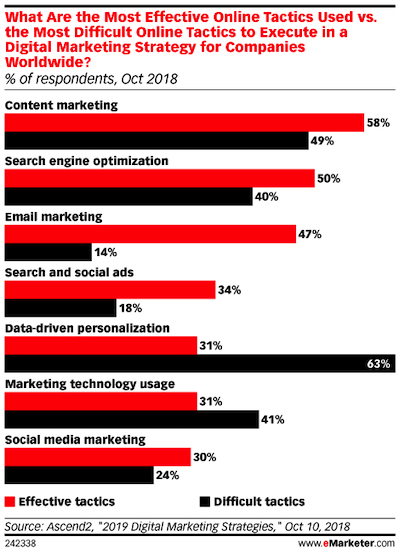
Personalization extends far beyond the advertisement — to content, social, search, email, and more. The data makes it clear.
It’s no surprise this myth persists, though, because there are still marketers who greatly prioritize pre-click personalization over the post-click personalization. They narrowly define their ad targeting: down to demographics, psychographics, firmographics, behavioral information, and more. However, they send that highly targeted ad traffic to a generic landing page.
This is a failure of the advertiser. When the pre-click offers personalization, and the post-click does not offer that same personalization, the visitor is left with a disjointed, impersonal experience. And this is just one of many examples.
More and more, advertisers are learning that they can’t simply personalize on one platform, or medium, or stage of the ad campaign. If you personalize one, you must personalize all. A personalized ad is only the beginning.
Myth #7: You need technical expertise to be successful with personalization
As you can see from the graph above, one of the most difficult areas of personalization is “data-driven” personalization. While you might assume this would be among the easiest — since data is more accessible to digital advertisers than ever before — it’s actually one of the hardest for exactly this reason. Many find there’s too much to sort through. How do you translate raw data to meaningful rules for personalization? This is something many brands struggle with.
However, personalization does not have to be segmentation. As in, you don’t always have to dig through data to determine rules to personalize based on. In a blog post on personalization, Guy Yalif explains:
Unlike rules-based personalization, predictive personalization automatically discovers segments by observing how your ideas perform for different audiences. These AI-based systems explore all possible combinations of visitor attributes to discover which of your messages perform best for each. There is no need to pre-define segments and specify messaging for each segment (unless you optionally want to). Predictive personalization often delivers new insights about your audience.
While more costly, personalization based on machine algorithms can save you the trouble of manually sorting data and attempting to make sense of it. Tools like Yalif’s Intellimize can help you find trends and use them to your advantage. With the help of a personalization system, online bank, Chime, found that it different headlines produced varying results across devices:

Then, it automatically redirected traffic to where it was converting best, thereby achieving a level of device personalization without any manual rule-based intervention.
At a simpler level, think of product retargeting on social media. A user interacts with a product page that has a pixel on the back-end, and when they log into Facebook, they see an ad for that product.
These require very little setting up by the advertiser: a pixel on the back-end, an ad campaign for those who trigger it. They’re powerful ways to personalize, without the need for rules that require drudging through data.
Myth #8: A/B testing is personalization
This myth is understandably confusing. At first glance, A/B testing and personalization seem very much alike. Here’s how:
A/B testing refers to the process of comparing one web page (A) vs. a second version of that web page (B) to see which performs better for a particular goal. After driving equal traffic to each, while controlling for validity threats, you’ll have an idea of the more successful page.
At that point, you might think you’ve better “personalized” your web page to the traffic source that was landing on it. But have you?
A strength of A/B testing is its randomness: A visitor has a 50% chance of landing on page A, and a 50% chance of landing on page B, which keeps the experiment from suffering from the selection effect. A random sample is what allows you to make accurate inferences about your visitors from the data you gather during the test.
However, it’s also a major weakness when it comes to identifying the right design for a particular population. If you continue to A/B test your traffic to find the best performing design, you will only get the best average design. You won’t get the best personalized design for each group.
For example: You are A/B testing two different landing pages for your business. One of them uses majority images; the other uses long-form body copy. Your results may show that 60% of visitors prefer the image-based page, but this doesn’t mean the other page is ineffective. It means the image page is the best based on the average visitor. This is A/B testing.
Personalization, on the other hand, is not about finding the best average page. It’s about serving the most relevant page to your visitor based on their interests, demographics, preferences, etc. A/B testing and personalization can be used together (and they should be), but they are not the same. Instapage, for example, allows its users to create personalized experiences with the help of UTM parameters:
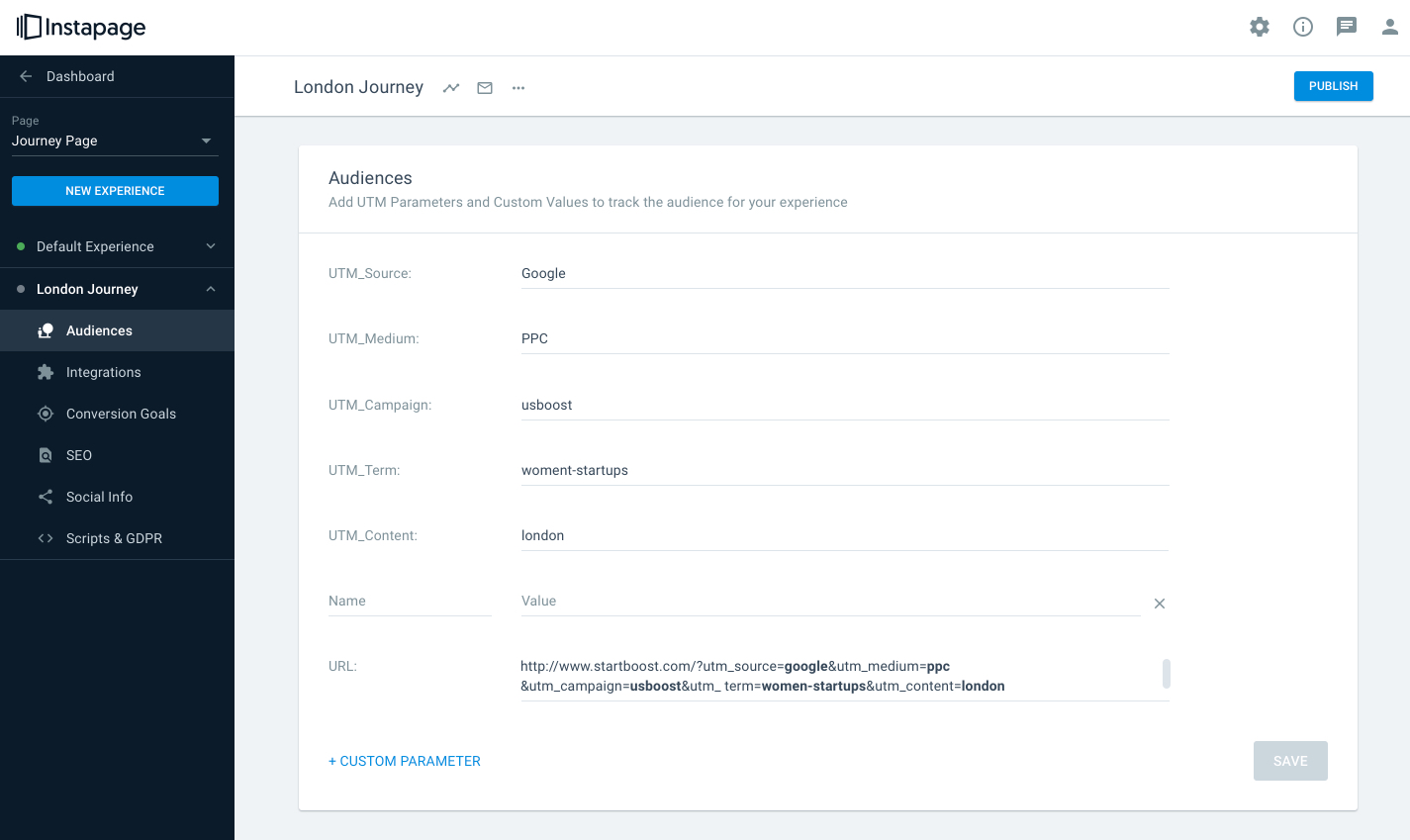
Users who meet these parameters will be served the corresponding personalized experience:
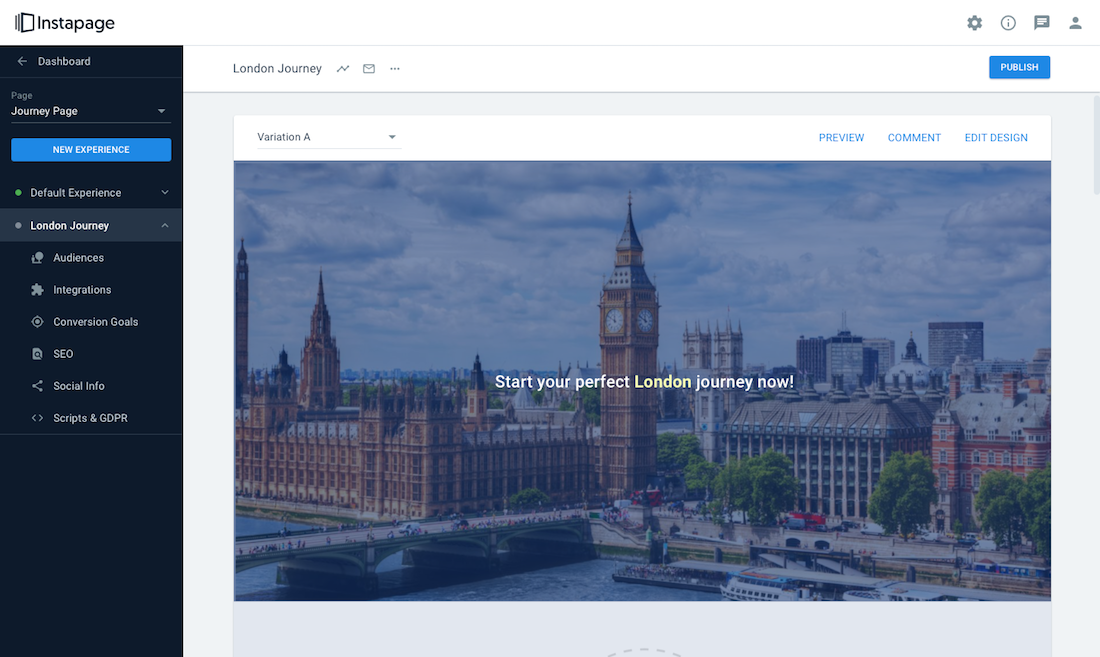
Once you’ve created a personalized experience, you can discover ways to improve it with A/B testing. These two techniques complement each other, contributing to a potential boost in key bottom-funnel metrics.
Overcome the myths of personalization
Is personalization just a passing fad? The answer is pretty clear: Consumers expect it, which means those who can provide it stand to benefit greatly. When there are flexible ways to provide it, for every business, there’s no excuse not to.
However, personalization must strike a balance between helpful and intrusive, pre-click and post-click, to deliver a balanced experience that your customers will appreciate. Learn more about how to balance your digital campaigns with an Instapage Personalization demo.
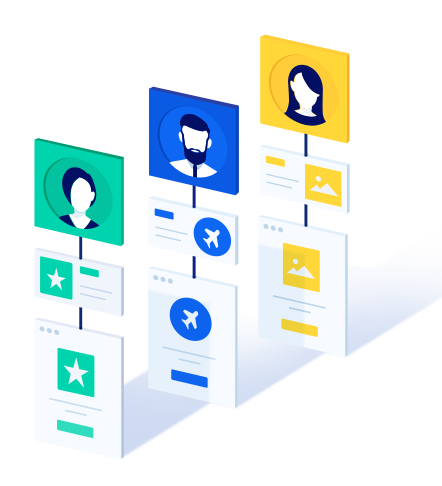
Get a Personalization Demo
See how easy it is to create unique experiences for any audience you target.
